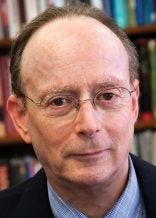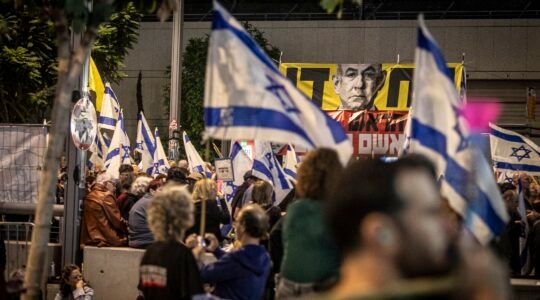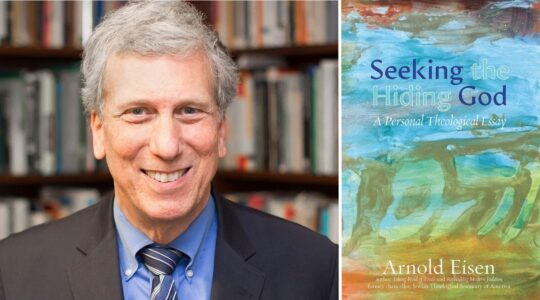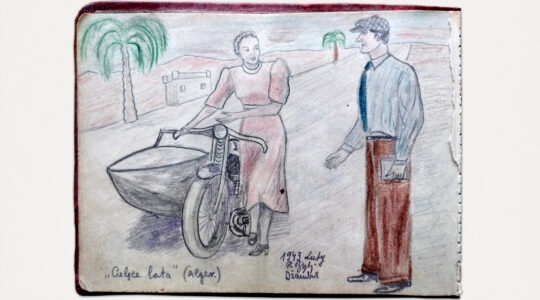‘Even if there is peace between Israel and the Arabs, it will not solve our problems,” Nazia Masrawa, the mayor of an Arab Israeli town in the north called Kfar Qara (population 17,000), told me in a soft, matter-of-fact voice during a recent interview here.
He cited the lack of interaction between Arabs and Jews living in close proximity, based on fear and distrust, and the economic gap between the societies that has widened since the first intifada almost 24 years ago.
“Even if there is peace, we will not leave our cities; we are staying,” he said, adding: “We don’t want to live in Palestine.”
Sitting next to Masrawa in my office was Chaim Gaash, the mayor of the nearby Jewish town of Pardes Hanna (population 35,000), who acknowledged, “We live close to them but know little about them.”
But that is beginning to change. Earlier this year the two mayors agreed to take part in a three-year program called Shared Communities, aimed at building social, economic and educational bridges between their towns, with the larger goal of replicating the program throughout the country in hopes of building a more socially cohesive Israeli society.
The immediate aim, though, is to start slowly and focus on day-to-day problems in both communities, avoiding national politics and unrealistic expectations of instant harmony.
“We just want to deal with each other on the grass-roots level,” said Gaash, a former Navy career officer born in Israel of Holocaust survivor parents. “This is not a peace process and we are not out to solve the Israeli-Palestinian conflict.”
Masrawa, an attorney, agrees. “We want to find neighbors and build coalitions,” he said. “Every day there is enough tension in our lives to begin a war. But we want to live in peace, and both of us,” he noted with a nod to Gaash, “feel we have no choice” but to work together.
Helping them navigate that effort is Givat Haviva, the educational institute founded in Israel in 1949 by the Kibbutz Artzi movement. Officials from the group approached the two mayors and convinced them to become the first of about 20 planned Jewish-Arab mayoral pairings. So far, three other Jewish mayors and three more Arab mayors have expressed interest in the program.
Givat Haviva, which has a New York fundraising arm, offers a number of formal and informal programs supporting improved coexistence, including joint Jewish-Arab sports projects for young people, dialogue groups, a Holocaust curriculum, and courses for women.
As a first project between their communities, the two mayors helped choose a dialogue group comprised of five women each, because, as Gaash noted, “women have a higher emotional intelligence.”
The women themselves, religious and secular, old and young, were asked to determine their own objectives.
Support the New York Jewish Week
Our nonprofit newsroom depends on readers like you. Make a donation now to support independent Jewish journalism in New York.
After a good bit of tension at the outset, they found common concerns in discussing children, especially teenage girls, and agreed to bring in professional social workers from Givat Haviva to help deal with problems like eating disorders and rebelliousness. Six months into their discussions, they are also planning to publish a book of recipes together.
The plan is for the initial women’s group to spin off others. In addition, a group for retired men from both towns was formed, mostly around the game of bocce, which allows for quiet conversation, and a teen cohort was created, with the focus on forming a theater group.
“The teen group was the most challenging,” noted Riad Kabha, a former mayor of the Arab town of Ba’arta who directs Givat Haviva’s Jewish-Arab Center for Peace and accompanied the mayors on their visit to the U.S.
He said that “teenagers tend to be the most extreme in their views,” and that putting on a play allows for expression through language and movement and can provide a release in tensions.
But the mayors are open about the risks involved in this project, and acknowledge that there are vocal critics in each of their communities.
Gaash is accused by some of being too trusting of Israeli Arabs.
Masrawa hears frequent criticisms that the project is utopian or is a cover-up for discrimination against Israeli Arabs. But in a sense, he feels the current situation is so dire for his people that there is no place to go but up.
“I ask them, ‘If you don’t like this project, what’s your alternative? Just complaining?’
“We want equality,” he continued. “This may be a way for Jews to be less afraid of Arabs. Maybe they will come to respect us when they meet us face to face. Maybe it will help economically” in that it could lead to workers from Kfar Qara being hired.
Both mayors are realistic and acknowledge there is a long way to go. The Givat Haviva organizers are hoping that after the initial funding for the program ends, the local Jews and Arabs will want to continue the projects on their own.
In the meantime, the key lesson here is to lower expectations and keep the goals grounded in the pragmatic. When Jews and Arabs get together to discuss politics, tempers flare and nothing is accomplished, both mayors said.
“What we can do together,” Masrawa asserted, “is make small changes.”
Support the New York Jewish Week
Our nonprofit newsroom depends on readers like you. Make a donation now to support independent Jewish journalism in New York.
Gaash agreed. “Dialogue itself is not enough,” he said. “Building a playground together: that’s tangible. I think there’s a chance for us if we do things carefully. Wisely. Slowly.”
With the Israeli Arab population making up more than 20 percent of Israeli society, it is clear that aggressive affirmative action programs on a national scale are needed to close the economic gap and defuse radicalism. But if “facts on the ground” projects like Shared Communities can gain traction — carefully, wisely, slowly — there is hope for improved relations within Israel’s borders, regardless of increasingly distant Israeli-Palestinian “peace talks.”
E-mail: Gary@jewishweek.org
The New York Jewish Week brings you the stories behind the headlines, keeping you connected to Jewish life in New York. Help sustain the reporting you trust by donating today.





